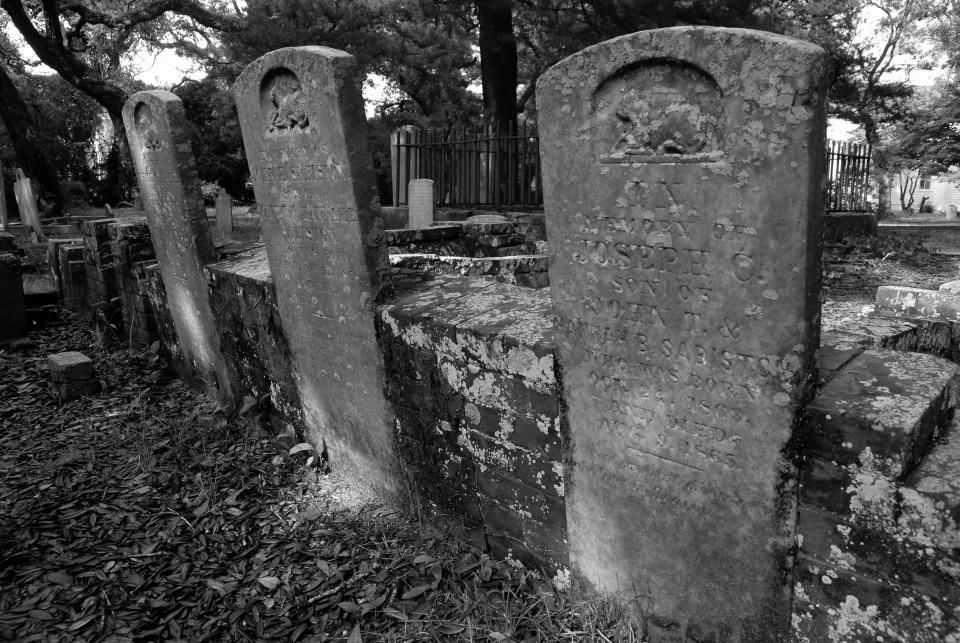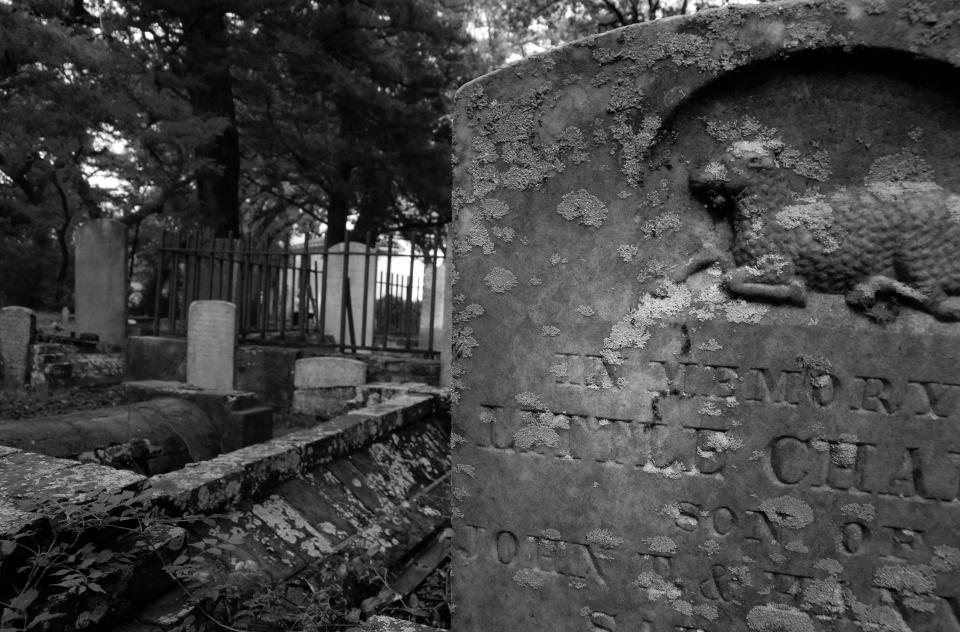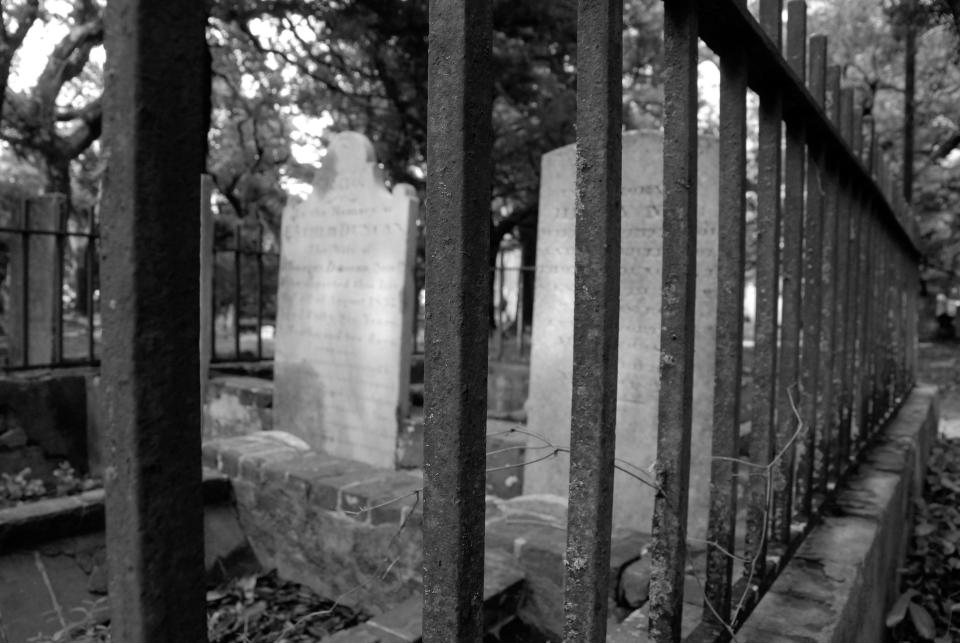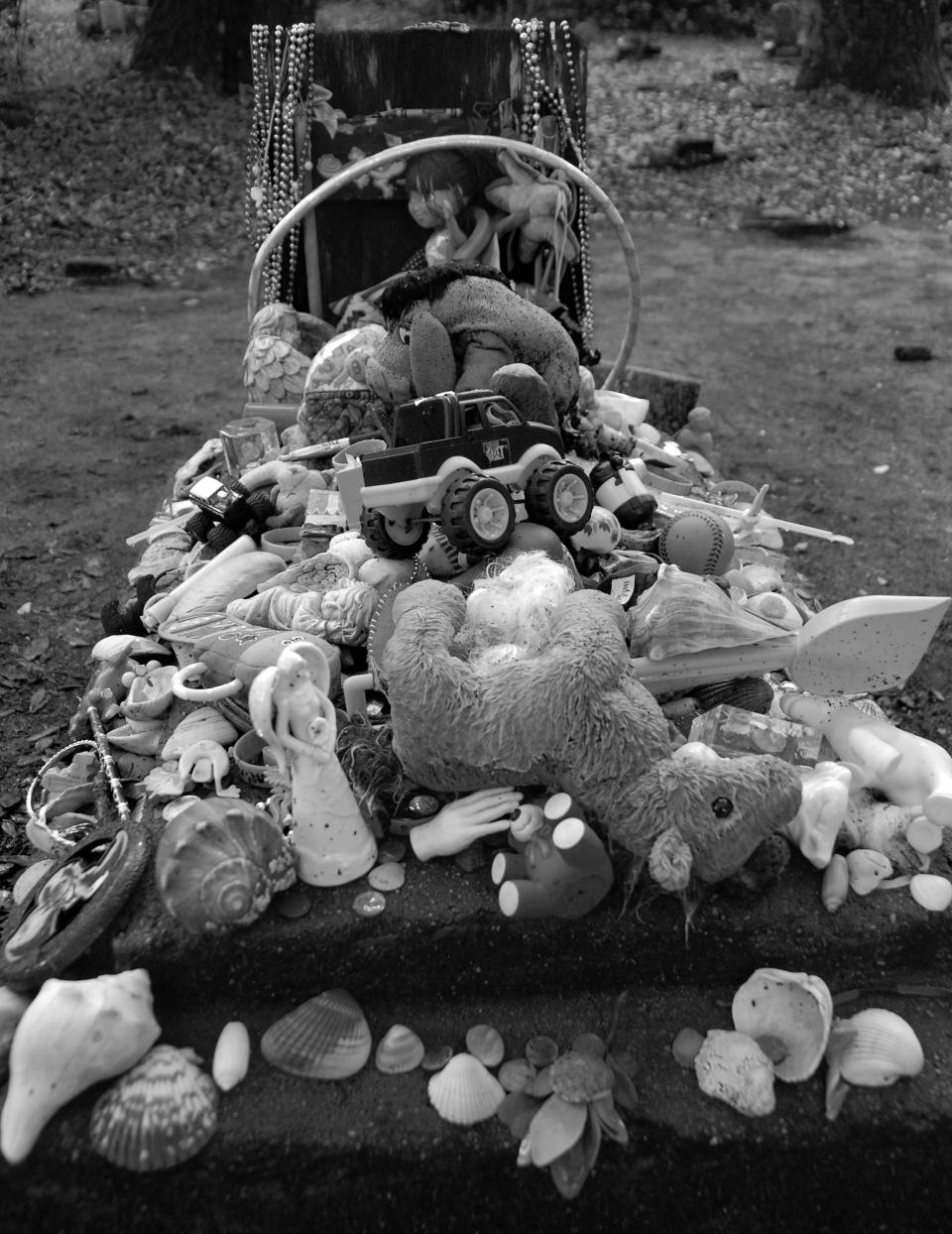The Old Burying Ground attracts New Bern, Craven tourists to its drama of war and love
This is the second part of an ongoing series by reporter Todd Wetherington examining the beauty and cultural significance of our area's historic resting places through words and photos.

Crossing through the wrought iron gates of the Old Burying Ground in Beaufort is not unlike entering a theater for the showing of a particularly grand drama, one peopled with an unlikely cast of figures both tragic and absurd. It's a drama that has attracted visitors from New Bern and Craven County for decades, as both a tourist attraction and as the final resting place for relatives spanning generations.
The Old Burying Ground's actors include sailors, soldiers, lost children and the utterly forgotten that now lie entwined with the roots of live oak and magnolia, the names on their markers worn thin with salt spray and wind.
Located at 411 Ann Street, the Old Burying Ground was originally used for Anglican church services in nearby St. John’s Parish. Following the first survey of the area, the cemetery was deeded to the town of Beaufort in 1731.
Though the earliest marked grave dates back to 1756, it’s almost certain that many burial plots, some designated with little more than shell, brick, or wooden slabs, date back much farther.
While the northwest corner, the oldest part of the cemetery, appears empty, an archeological survey in 1992 confirmed that the area is lined with graves. The unmarked plots are thought to contain the victims of the Indian wars of 1711, during which the area was all but depopulated by Coree and Neusiok tribes.

But it’s the later occupants, the prominent and colorful figures of Carteret County’s past, that work on the imagination.
There’s the British naval officer (d. 1700s) who fell ill in Beaufort during the Revolutionary War. With his dying words, he asked to be buried in full uniform, standing up, facing England and saluting King George. Buried nearby is Sergeant George Johnson (d. 1800s), a member of the 35th United States Colored Infantry, who lies beside Pierre Henry (1812-1887), a free-born black man.

One of the most well known occupants of the Old Burying Ground is Captain Otway Burns (d. 1850), a naval hero in the War of 1812. Atop his tomb stands one of the cannons from his brigantine, the Snapdragon.
Another seafaring man’s grave is inscribed with the verse:
"The form that fills this silent grave
Once tossed on ocean’s rolling wave
But in a port securely fast
He’s dropped his anchor here at last.”

And then there are the graves of the families, the children. There’s the tale of Sarah (d. 1792), who believed her husband, Jacob Shepard was lost at sea. Sarah married another man, Nathaniel Gibbs, and gave birth to a child. But after several years' absence, the shipwrecked Jacob unexpectedly returned to Beaufort. The two men agreed that Sarah would remain a Gibbs in life but would spend eternity at Jacob’s side.

The tale of the Gabriel family is told on the gravestone of the young mother who died following childbirth, her infant following soon after:
“Leaves have their time to fall
And flowers to wither at the
North wind’s breath
And stars to set...but Thou has all seasons, for thine own,
O Death.”
But somehow, all paths in the cemetery seem to lead to one grave.
There are several variations of the story about a young girl who became ill at sea during a voyage home from England with her father. When the girl eventually succumbed to the illness and died, her father kept his promise to his wife to bring their daughter home by preserving the child's body in a cask of rum. Upon returning home, the little girl was buried — still in the rum cask — at the Old Burying Ground.

And for two and a half centuries visitors have paid their homage to the child.
They leave their gifts on her grave, which is marked only by a thin piece of wood: shells, stuffed animals, angel figurines, dolls, beads, crayons, pirate’s flag, and pennies.
Some claim to have seen a little girl playing in the cemetery at night, or that her gifts are sometimes found in other parts of the Old Burying Ground, as though someone has taken them away to play.
Maybe. Maybe she’s down there yet, restful and content in the grace of her father’s promise. Grown from a child into a tale for a winter’s day, of the sea and love and remembrance.
Reporter Todd Wetherington can be reached by email at wwetherington@gannett.com. Please consider supporting local journalism by signing up for a digital subscription.
This article originally appeared on Sun Journal: Beaufort's Old Burying Ground: a drama of war, the sea and lost girls

